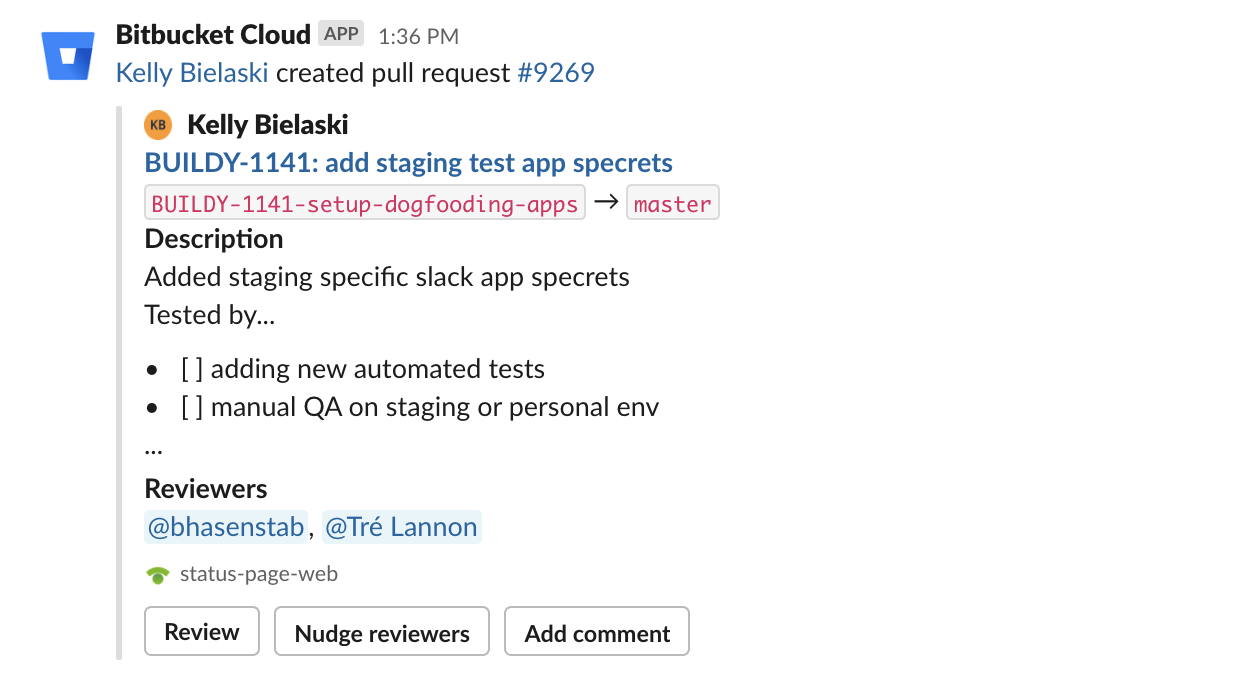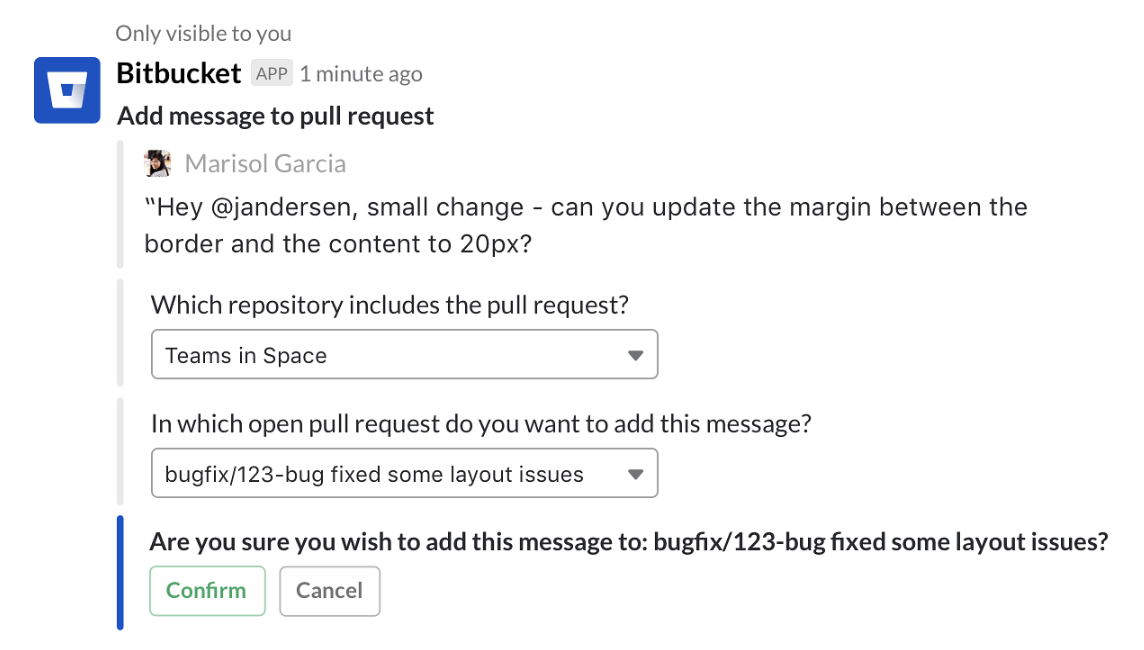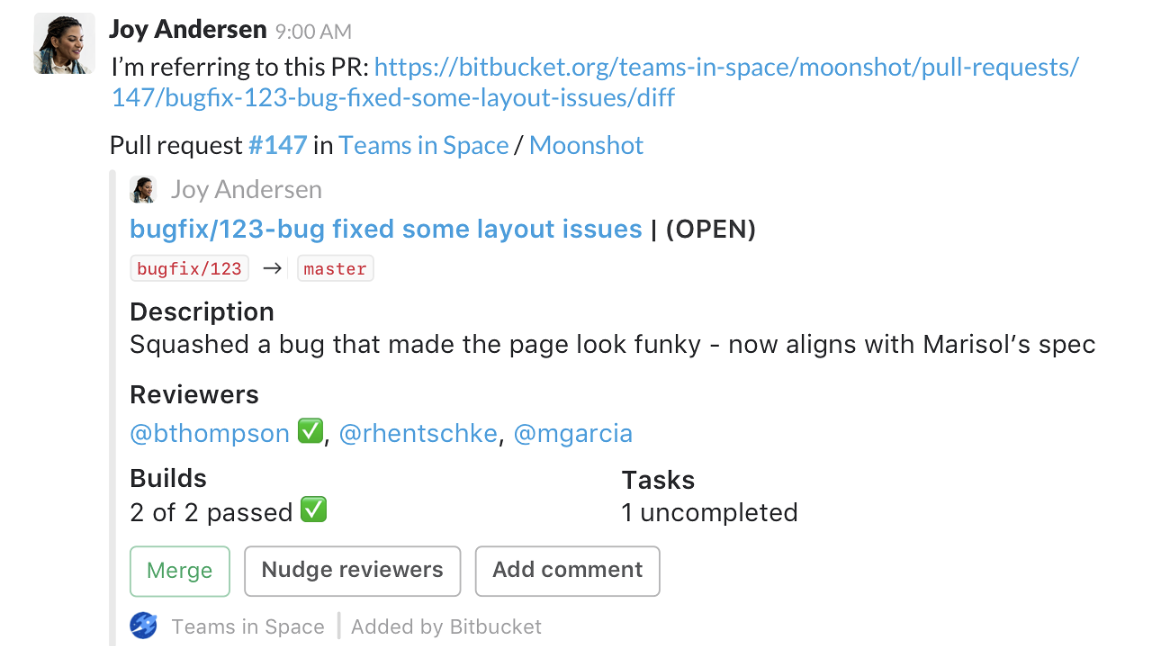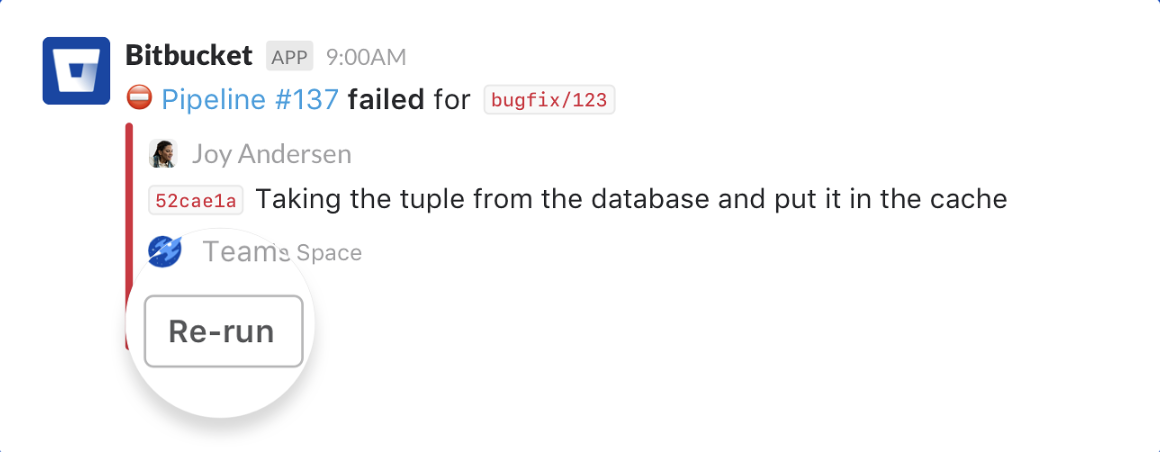While working from home is the new normal, communicating and collaborating virtually hasn’t become any easier. And for developers, being productive while at home has its own set of challenges (we’re thinking of things like figuring out how to pair program over Zoom or how to make do with only a single monitor).
In times like this, our engineering team has been relying on one short-cut towards productivity: the Bitbucket Cloud bot for Slack.
The engineering team here at Atlassian, along with thousands of other developers, uses the bot to stay in sync with teammates and to perform key Bitbucket actions without ever leaving Slack. They’ve shared their four favorite features that help them get the most out of the bot and minimize context switching.
1. Pull request gone stale? Ping outstanding reviewers on your pull requests

Every development team knows reviewing PRs take time. But with the constant influx of notifications and pings our team receives, it’s easy for PRs to fall off one’s radar. And now that our team doesn’t have the option of walking up to a teammate to ask about a PR, the Bitbucket bot in Slack plays a more important role than ever.
As days pass, instead of dancing around how to best remind them, our developers use the bot to nudge reviewers directly from Slack with a follow-up ping. The notification is even updated with the latest status, so the rest of the team stays in the loop with what’s happening with your builds and PRs.
2. Add Slack messages to pull requests as comments

To ensure things don’t get lost in the shuffle during a flowing Slack conversation, the development team frequently add Slack messages to pull requests as comments. This ensures even little things like design tweaks are always caught and made actionable.
The message then appears as a comment on the pull request you selected, showing the author and the user who added the message. To gain more context around the comment, the team can click the message link to take them back to the original conversation in Slack, without having to dig through a channel.
3. Merge that pull request now that it’s approved

Once a pull request is approved by its reviewers, our team can directly merge it from Slack.
The message buttons also work in Slack’s mobile app so the team can merge the second they get that reviewer approval or green build, even while they’re on the move. And for teams who are merge-check users, like us, rest easy. Pull requests won’t merge if the checks haven’t passed.
4. Re-run a failed Pipelines build

Failed Pipelines build? Our engineering team is able to re-run a build simply from Slack with a simple click. And because all build information for our team is aggregated into a single channel, the entire team can get visibility to when builds pass or fail and anyone can feel empowered to re-run it.
Like all of us, our development teams are still fine-tuning how to communicate and work in a remote-first environment. Slack already serves as a virtual office for us, but with the Bitbucket for Slack bot, it’s now easier than ever to go from message to action with a simple click.
As part of our ongoing commitment to help customers get the most out of our tools, Atlassian has partnered with Slack to offer our customers 50% off a new Slack paid plan for 12 months*. Slack paid plans let your team make video calls, install all the integrations your team needs, and access unlimited message history including Bitbucket pull requests.
